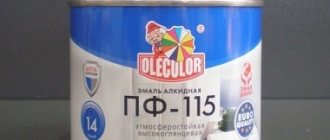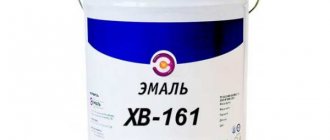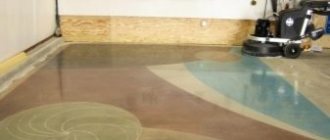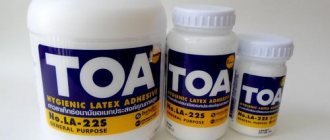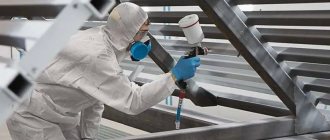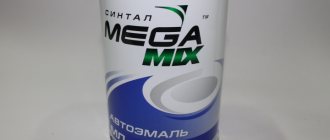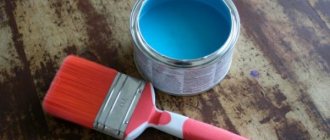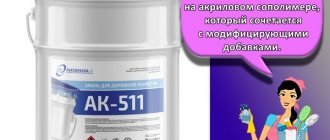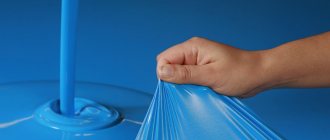Alkyd enamel is a paint coating with good technical characteristics. The coating is distinguished by a variety of colors, abrasion resistance and ease of use. Alkyd enamel is used for both interior and exterior work. The building materials market offers not only glossy, but also matte and semi-matte compositions. In this article we will get acquainted with the features of using matte alkyd enamel.
Purpose
Alkyd-urethane paint is intended for painting:
- Railway structures, trains, trains;
- Transport structures made of metal;
- Wooden surfaces, products;
- Agricultural machinery;
- Industrial machines (technological equipment) are actively used in various fields of industry;
- Metal supports.
Attention! Alkyd-urethane enamel is indispensable for painting work in the cold season. At low temperatures, the enamel dries perfectly.
This is an ideal option for urgent painting work that is limited in time. According to its technical characteristics, enamel is suitable for painting products in residential buildings: painting railings, stairs, floors.
Using paint and varnish material, you can give the surface a protective and decorative function. The main criteria by which paint and varnish material is selected:
- Durability of the formed film;
- Adhesion level;
- Complete drying time;
- Viscosity;
- Decorative.
Alkyd-urethane paint has all of the above criteria.
Marking
On cans of alkyd enamel the abbreviation PF or GF is indicated, which means that this alkyd paint is made on the basis of pentaphthalic or glyphthalic drying oil. When used in the production of melamine alkyds or alkyd-styrene mixtures, the ML or MS marking is used. Oil ones are marked with the letters MA.
The numbers following the letters indicate the properties of the composition and scope of application:
- 1 – is weather-resistant, allowed for outdoor use;
- 2 – cannot withstand temperature changes, can only be used indoors;
- 3 – a special type of paint intended for conservation (protection);
- 4 – increased moisture resistance;
- 5 – special properties, for example, luminescence or the ability to repel rodents;
- 6 – possibility of contact with petroleum products;
- 7 – resistance to acids and alkalis;
- 8 – increased heat resistance;
- 9 – high electrical insulating properties;
- 0 – primer mixtures.
The letters M (matte), PM (semi-matte) indicate the degree of gloss. The color of the paint is given without encryption, in ordinary words: white, gray, blue, etc.
Compound
The main composition of this enamel is uralkyd varnish. Solvents, various additives, fillers, and pigments (dyes) are used as additional components. Additives are added to enamel to improve properties during operation.
The coating protects the surface from damage, rust, and microorganisms due to special additives.
Important! Marble chips or ground sand are used as filler. These components are in a very fine state.
Peculiarities
The versatility of alkyd enamel allows it to be used for treating various surfaces. During interior decoration, the composition is indispensable for painting the radiator, but before starting work, you should definitely make sure that the material is able to withstand high temperatures.
When painting wood, it is better if the alkyd enamel dries for at least 30 hours. We should not forget that it is always possible to reduce the viscosity of the product by using a solvent.
Matte alkyd enamel coating, characterized by durability and reliability, which can be purchased at an affordable price for the consumer.
Specifications
The appearance of a completely dry coating forms a uniform, smooth, glossy film. A small shagreen patch may form. Coating without foreign inclusions.
The VZ-246 viscometer shows that the conditional viscosity is 50-90. Drying time at a temperature of +20 (+/- 2) degrees C is about 6 hours. Volatile substances in a mass fraction of no more than 50-60%. The adhesion property is rated at 2 points. When the film was bent, it showed elasticity of 1 mm. The protective function in case of impact is achieved due to the formed film with a thickness of at least 50 cm.
Surface preparation
When applying any paint and varnish material, the surface to be painted can be processed. It is necessary to remove dust, dirt, grease, oil, and old enamel layer in advance. Cleaning must be of high quality.
Metal structures are cleaned of rust. Wooden structures must also be cleaned of the previous layer of paint. When cleaning, you can use special chemical compounds. Also, when cleaning by hand, use sandpaper.
Attention! Any surface must be treated with a primer before application. You can use several brands: “Express”, GF-0119, FL-03K, GF-021. Using a different brand of primer must be tested first. Check adhesion with paintwork materials.
After cleaning, remove dust. The surface of the structure to be painted must be dry and free of grease. Wooden structures must be cleaned of traces of resin, glue, and shavings.
Application methods
Polyurethane compounds are divided into groups both according to their composition and according to the materials requiring processing. Application type can be:
- aerosol;
- using a brush or roller.
Related article: Features of the use of powder paint and its types
Aerosol spraying is most often used when processing metal products. Polyurethane paint for cars provides uniform coverage without streaks or smudges. It is also an excellent alternative to conventional balloon compositions due to its safety margin.
Polyurethane paint for concrete floors is evenly distributed using a roller. The result is a smooth and even coating. But polyurethane paints on wood are best applied with a brush.
Directions for use
There is no difficulty in working with alkyd-urethane paint. The enamel is applied to a previously prepared, cleaned, dry surface. You can apply the paint with a regular paint brush, roller or spray gun.
If the paint has thickened, then it is diluted with a solvent - white spirit - before application.
Paint consumption is 120-150 grams per square meter in one layer. This expense is theoretical. From a practical point of view, consumption is influenced by: structure area, roughness or porosity, application method. You can apply the enamel using one of the following methods: brush, roller or spray.
One layer dries from 3 to 3.5 hours to touch. It dries completely in 6 hours. The coating becomes hard after 48 hours.
Advantages and disadvantages
These paints would not have gained such popularity if they did not have so many advantages:
1. The film has excellent density after drying. 2. Alkyd paint has excellent water-repellent properties. 3. Good resistance to external mechanical influence. 4. Possibility of use in rooms with a considerable level of humidity, for example, swimming pools or bathrooms. 5. It takes a little time to dry. 6. Does not lose brightness and does not turn yellow over time. 7. Large range of compounds for working outside. 8. Remarkable anti-corrosion properties, which is why alkyd paints are often used for processing metal structures. 9.Easy to operate. 10. Affordable price, like other water-based “brothers”. 11. A large assortment of shades that can be tinted in any variety. Colors can be in the form of pastes, pigments or paints.
There are also a number of disadvantages that introduce their own characteristics during operation:
1. Has an unpleasant and pungent odor. It is recommended to work with it while wearing a respirator. 2. Alkyd paints that are not formulated for use in direct sunlight may crack or yellow. 3. Before drying, it may have a low degree of environmental safety. 4. Fire danger. 5. Avoid contact with eyes and skin. If the paint is on it, then thinners will help: the affected area is smeared with a cloth soaked in them, then the hands are washed with soap.
Patent 2374283
This document contains all the necessary detailed information about paint and varnish products. By studying patent 2374283, you will find out which group the paint and varnish material belongs to, its scope of application, composition, advantages, properties, technical characteristics.
The patent describes in detail what pigments are used to produce different colors. What are the stages of enamel production? Each stage is described in detail. For example, at the first stage it lays down the main components, pigments. After receiving the mass, the second stage begins. Additional components can already be added to it to improve and enhance certain properties.
Manufacturers
Siberian Paint and Varnish Plant – presents its products to Russian buyers. It specializes in the production of paint and varnish material. In 2022, the plant underwent a scheduled inspection. According to its results, the product received the highest rating. All products are manufactured using modern technologies. The highest quality raw materials are used. Offers a wide selection of universal products for both internal and external work. The products of the Ural Paint and Varnish Products Plant are sold at low prices. The main specialization is the production of high-quality modern and universal products. The main advantage among competitors is the versatility of the product. Paintwork materials can be used in any industry. The plant is one of the largest and leading in the Ural region. It is recognized in the Russian market. The official website provides complete information about the products and the company. Website siblkz.ru
On the shelves of construction stores you can find products from Tex. Enamels from these companies are not intended for use in industrial applications. Both manufacturers have been on the Russian market for more than 15 years. We have earned the trust of consumers with high quality materials.
Structure of alkyd paints
Based on the name, it becomes clear that the basis is alkyds. They are one of the first synthetic polymers to find application in the coating industry. Now, although more durable products are appearing in this market niche, alkyds have a significant advantage - their production uses renewable raw materials.
The composition of alkyd paint includes:
‒ alkyd varnish – in many ways it determines the key characteristics. There are two types: glypthal and pentaphthalic. Their main difference is a variant of a polyhydric alcohol, taken for the purpose of erythrification of mixtures of fatty acids. In the case of glypthal varnish, this is glycerin, and in pentaphthalic varnish, it is pentaerythritol. In addition to alcohol, the base contains phthalic anhydride. It is used due to its low cost and wide availability. Also, thanks to phthalic anhydride, costs and production time are reduced and production profitability increases. There are two more types of varnishes - etrifthalic and xyphthalic, but they are less common due to their low benefits;
- fillers (sand, finely ground marble or granite chips);
- solvent. As a standard, purified kerosene (aka white spirit) is preferred as a solvent, which was chosen due to its good ability to dissolve various compounds of petroleum origin. Sometimes the paint needs to be further diluted with a solvent. Usually the name of the most suitable one is written on the can. It must be remembered that wooden surfaces dry faster and the solvent, absorbed into the structure, will protect it from moisture.
- pigments that are added to alkyd paints to determine the color and opacity of the coating. They can be organic, inorganic, artificial and natural. They give the paint richness and durability, but in addition to decorative functions, they are involved in creating protection. For example, some pigments in paints can cope with corrosion. In order to expand the color range, you can do the tinting yourself. You need to buy a universal colorant that will help you adjust the shade when mixing.
- antiseptics. Their main purpose is to protect wood from fungus and harmful insects.
